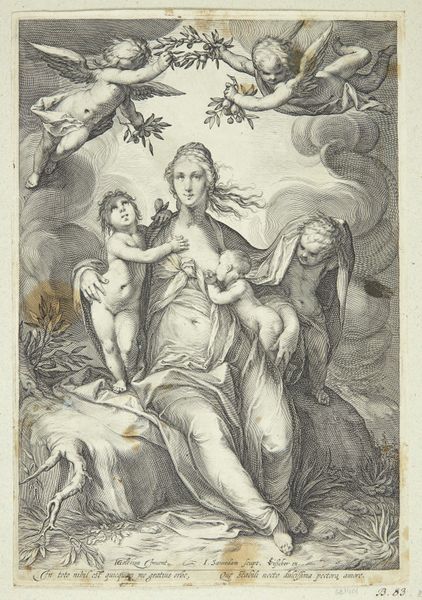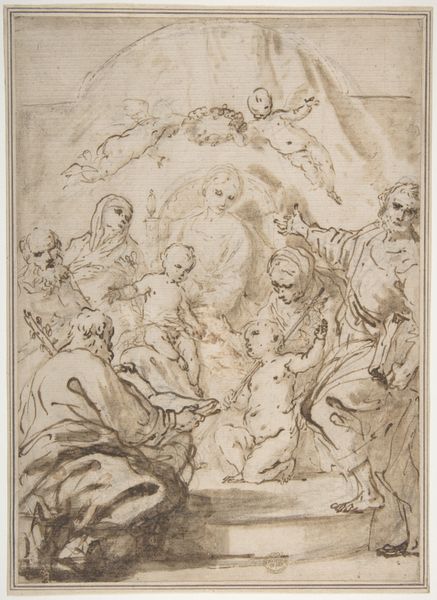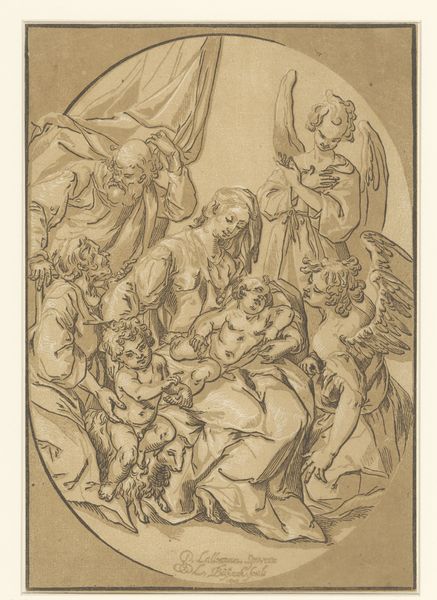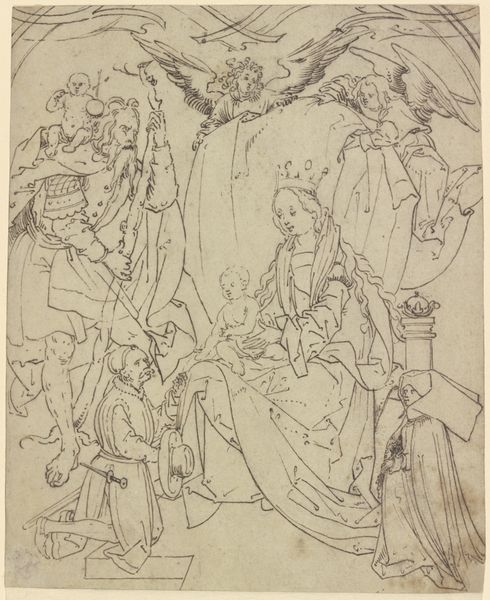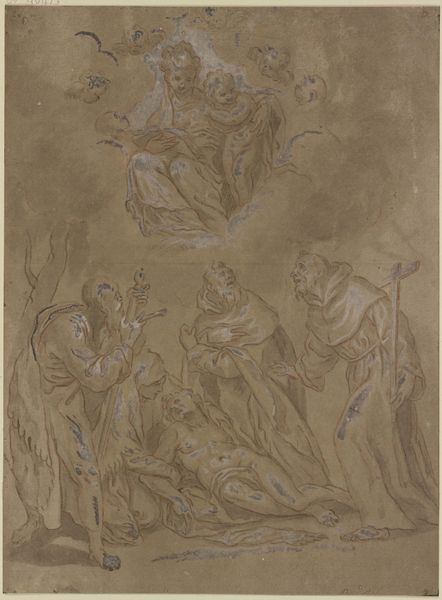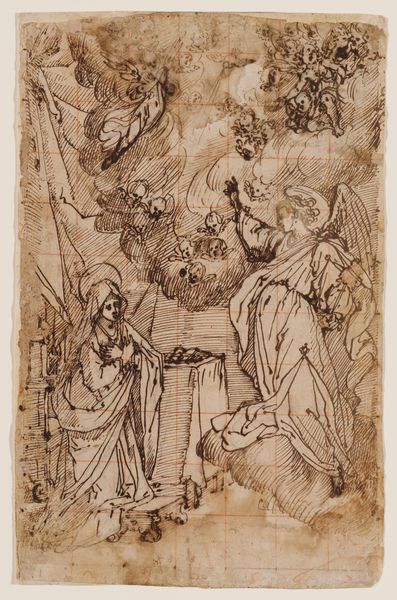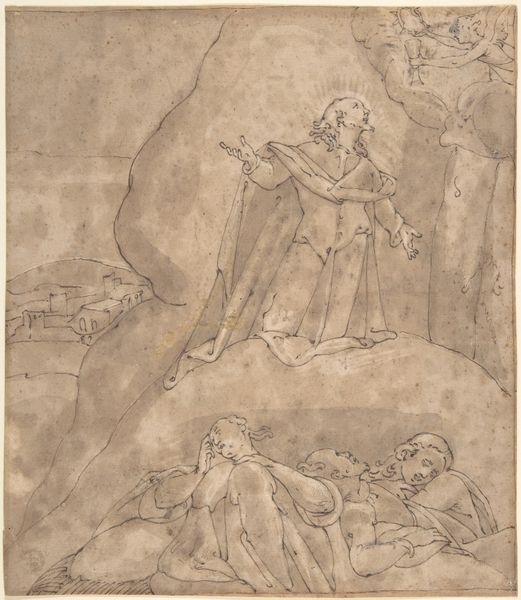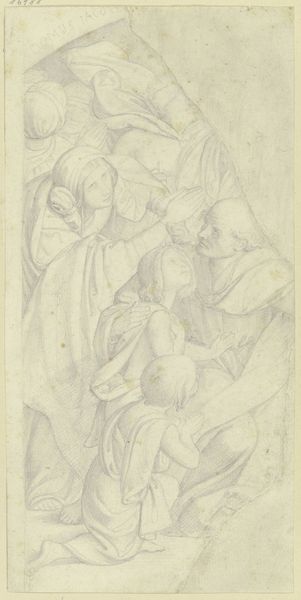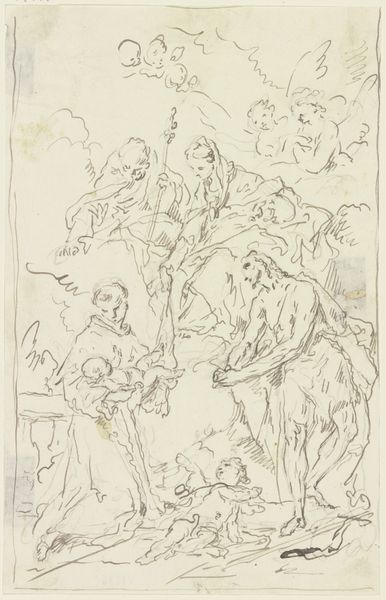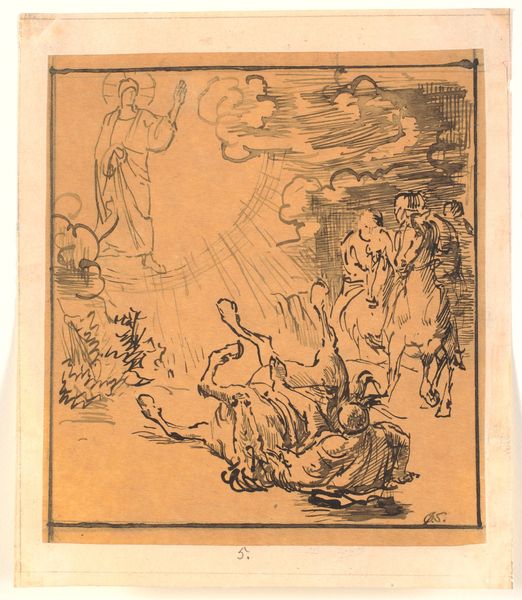
drawing, ink
#
drawing
#
ink drawing
#
figuration
#
ink
#
line
#
history-painting
#
italian-renaissance
Dimensions: 164 mm (height) x 283 mm (width) (bladmaal)
Editor: This ink drawing, "The Lamentation," made sometime between 1510 and 1563 by an anonymous artist, is filled with grief. The angel hovering above the body is so striking, but everyone is draped in such obvious sorrow. What kind of dialogue can we create between that heavenly figure and the very earthly suffering below? Curator: Indeed. We have here not only a religious scene, but a lens through which we can examine the social structures that reinforce hierarchies of power and value. The central figure, the idealized, suffering body of Christ, invites us to consider whose bodies are valued, whose suffering is witnessed, and whose are rendered invisible by systems of oppression. The angel feels like the embodiment of divine intervention, but also represents a visual ideal against the pain made physical. Editor: That’s an interesting contrast. The idea of an “ideal” suffering… What do you mean? Curator: I mean that while the Lamentation is a common theme in Renaissance art, often meant to inspire piety, we can't ignore its potential to serve as a sort of… “acceptable” representation of pain. This raises critical questions about representation and its impact on lived realities. The composition is deliberately placing the ‘divine’ on display, while also creating space for mourning... Who is entitled to these spaces, and how is that enforced? What does accessible mourning look like for individuals that existed outside of the ‘holy’ sphere at this time? Editor: So you are suggesting we should question not just the artist’s intent, but what this imagery may have perpetuated, in a social sense? Curator: Precisely. The drawing itself embodies tensions: between line and form, light and shadow, sacred and profane. The emotional weight carried by these figures… Can it reflect historical context about gender, class, or race? Consider whose stories were actively silenced, and actively uplifted during this time. How has that changed in present-day dialogues? Editor: It changes the whole atmosphere to consider those implications. Thank you, this was very helpful! Curator: A crucial aspect of understanding art is deconstructing these silent messages, that ultimately affect cultural paradigms and visibility even today.
Comments
No comments
Be the first to comment and join the conversation on the ultimate creative platform.

